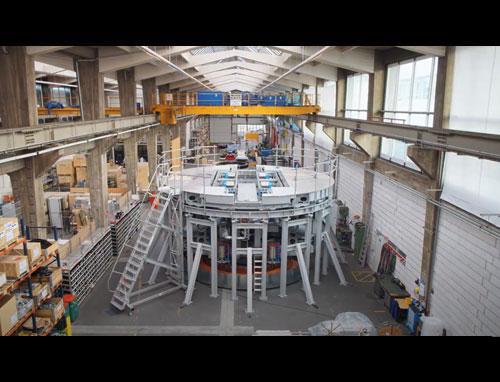A wind tunnel balance is a device used to measure the aerodynamic forces and moments experienced by a model during wind tunnel testing. It is an essential tool for understanding the aerodynamic behavior of an aircraft, road vehicle, or building and other objects in a controlled airflow environment.
Various types of wind tunnel balances are available, with the two most common being internal balances, such as those mounted inside the body of an airplane, and external balances integrated into the test section of a wind tunnel with the test object rigidly affixed to it. External balances provide increased flexibility for testing a diverse range of objects, such as cars, motorcycles, models of trains, or buildings.
Wind tunnel balances are designed to measure forces and moments by using load cells based on strain gages connected in Wheatstone bridge circuits. This is accomplished by strategically placing load cells or strain gages within the balance structure in a way that loads can be resolved accurately but keeping cross-talk and temperature influences to a minimum. The data of the load cells is used to calculate three forces (drag, side, lift) and 3 moments (roll, pitch, yaw) relative to the coordinate system center of reference.
The collected data is then analyzed to understand the aerodynamic behavior of the model. Engineers can study the lift-to-drag ratio, stability characteristics, and other important parameters in design iterations and find the optimum performance of the object being tested. The data gathered in wind tunnel testing is also used to validate computational fluid dynamics (CFD) simulations. This ensures that the theoretical models used in design are accurate and reliable.
In the specific case of road vehicles, the balance is also equipped with a road simulation system to accurately model the aerodynamic impact of the relative motion of the road in relation to the vehicle body and the rotation of the wheels.

There are two main design types available:
- The 5-belt system consists of a long narrow center belt that runs between the wheels of a vehicle and four-wheel drive units, one under each wheel.
- The single-belt system is made up of one large belt spanning the entire wind tunnel floor. The 5-belt system is typically used for production vehicle testing, whereas the single-belt is used in racecar development due to its ideal representation of the flow conditions.
In summary, wind tunnel balances are crucial tools in aerodynamic research and development. They provide engineers with valuable data to improve the efficiency, safety, and performance of various objects in aerospace, automotive and other industries.
